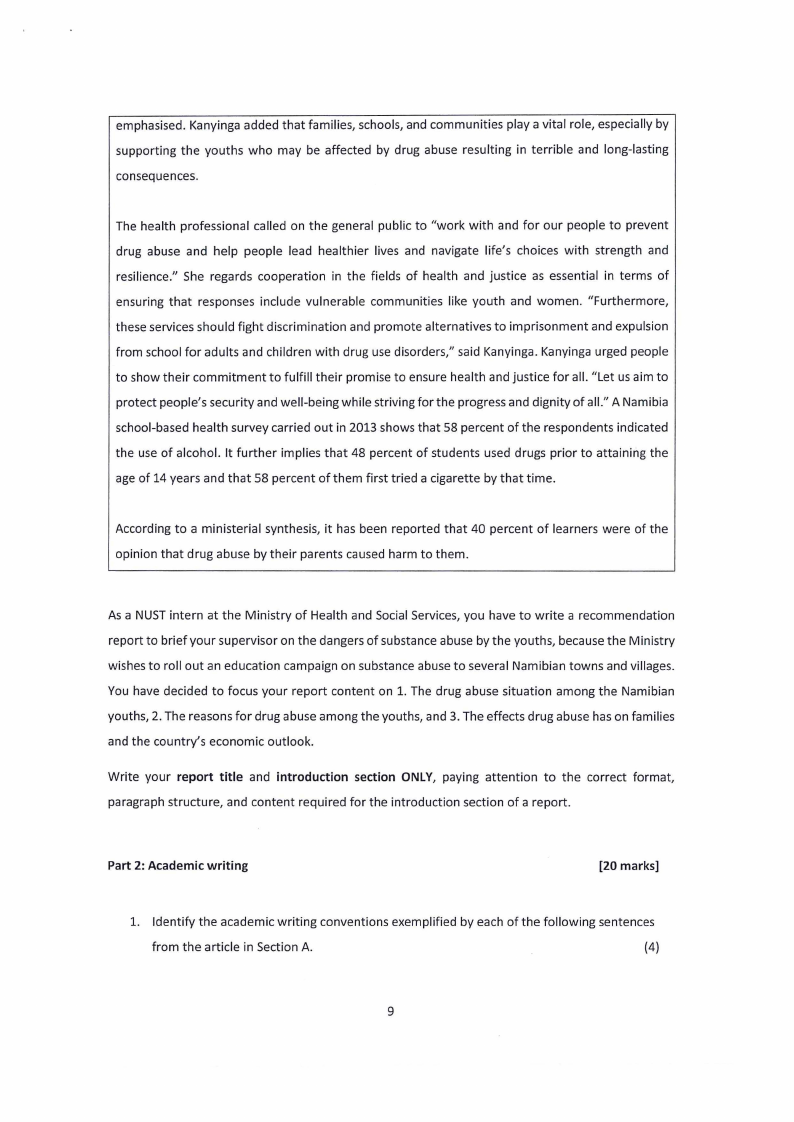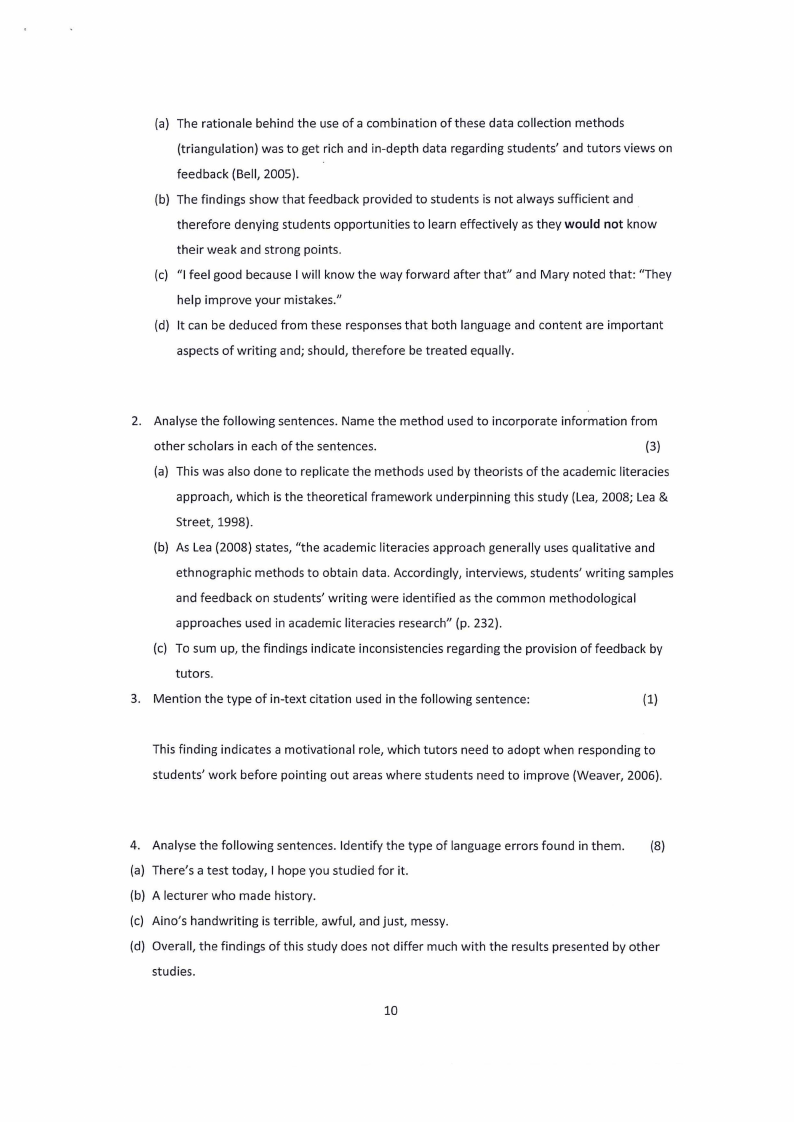
H
While writing feedback, one tutor made the following comments: "PLEASENOTETHAT TASKS
2&3 WAS SUPPOSEDTO BE SUBMITTED AS TWO SEPARATETASKS. PLEASEENSURETHAT YOU
FOLLOW INSTRUCTIONSCAREFULLYIN FUTURE. WHILST YOU HAVE RAISED SOME VALID AND
INTERESTINGVIEWS YOU HAVE NOT MANAGED TO ORGANISEYOURARGUMENT IN A LOGICALAND
COHESIVEMANNER. YOU ALSO NEEDTO PAYPARTICULARATTENTIONTO YOURWORD ORDERAND
SENTENCESTRUCTURE.MAKE USEOF A DICTIONARYTO VERIFYYOURSPELLINGAND VOCABULARY"
(Feedback by tutor)
In this assignment, the marker circled all language errors -for example, spelling and
vocabulary. Language errors were mostly highlighted, as literature has confirmed that most feedback
comments focus on grammar aspects. The student was advised to define different types of euthanasia.
Though this marker is pointing out issues that the student needs to work on, the use of capital letters
is not setting a good example to students, as they may adopt this style of writing in their future writing
tasks. Accordingly, the marker is advising the student to use a dictionary to fix spelling errors and for
improving vocabulary. This could attest to the fact that students delay writing assignments to the last
minute to an extent that they submit poor quality work (Ellis, Taylor & Drury, 2005; Gambell, 1991).
J
When giving feedback, tutors indicated that they make feedback as comprehensive as
possible in order to make the students aware of what they did right and where they need to improve.
For example, one tutor said: "For those who perform badly, I comment on every item e.g. content,
organisation, language, show them what and where to improve" (Tutor 2) while another tutor stated:
"I indicate where they have gone wrong and try to encourage them to correct their mistakes" (Tutor
4). Furthermore, another tutor provides "guidelines as far as possible:-by giving alternative answers,
approaches or different responses, sometimes not possible" (Tutor 4). One tutor said: "Start with
positive things like 'I enjoyed reading your essay, your essay/language/organisation is good'. Then I
indicate the areas which he/she needs to improve" (Tutor 7).
K
This finding indicates a motivational role, which tutors need to adopt when responding to
students' work before pointing out areas where students need to improve (Weaver, 2006). However,
some responses from marked assignments indicate that, when students are doing well in an
assignment, tutors tend not to give elaborate comments. In addition, what tutor-markers have said
did in correspond with what they do in practice.
L
Generally, tutors had different views on commenting on content and grammar. One tutor said:
"I give the student what he deserves, but indicate to him/her where he went wrong with the hope
that she would rectify and also give an average mark for the content and less mark for grammar
obviously when the grammar is irrelevant it mostly distorts the content" (Tutor 3). In contrast, another
one said: "I believe that the content should weigh as much as language because this is academic
writing. Language can sometimes hamper content, but the language is a means to content delivery"
(Tutor 7). Furthermore, one tutor said: "I look at the facts, the right answer more than the grammar.
Although grammar is also important, correct response counts more" (Tutor 4).
M
This finding indicates that it is difficult to evaluate content that is clouded by grammar
mistakes. It can be deduced from these responses that both language and content are important
aspects of writing and should therefore be treated equally. Disappointingly, one tutors' comment was
just a phrase which stated: "Mind your spelling". Some language errors were circled whereas some
were ignored. Good points were appreciated and talkback was used (Lillis, 2001). The comments were
not explicit enough to show the student in detail what she does right or wrong in the essay and how
4
































